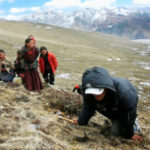The landlocked country Nepal is immensely vast in terms of cultural diversification, and Nepalese land is abundant with natural biodiversity. Nepal is a multiethnic nation with 125 diverse ethnic groups, speaking 123 distinctive mother tongues. Each of these ethnic groups apparently has its own custom, tradition, lifestyle, cuisine, etc. In fact, Nepali cuisine is definitely one of the world’s underestimated cuisines.
Moreover, Nepal is a hub of the world’s heritage sites. Nepalese ethnic groups have their own ancient and traditional manner of making liquor at home. These different types of homemade alcohols are not just tripped to you differently, they often cure some of your health-related disorders. Nowadays, due to the lack of private business ethics, the local or homemade alcohol of Nepal has lost its sovereignty.
However, there are still a majority of places around the country where you can still find various types and quality of Nepalese ethno liquor. In addition, we have acquired many forms of Nepali handmade liquor today which we believe you need to have a sip once in a while.
Aila/Local Rakshi
Aila is a local Raksi that is made by the grains along with the Marcha which plays the main role in making Aila. It is also called Wasa (meaning medicine in Newari). Especially it is, made by the people of Newari cultural people. In the Newari community, Aila carries special importance for the households. Newari feast and Pooja are incomplete without Aila. Aila is regarded as a Sagun in all of the Newari occasions like birthday, anniversary, graduation. Aila can cure a cold, cough, flu, and body pain of the hard work.

Source: https://royalmt.com.np/blog/aaila-newari-liquor/
Aila is enlisted as one of the 50 most delicious drinks in the world by CNN in 2011.A good Aila can be felt from the moment it touches your lips. You can feel all your sensory nerves getting active. You can feel it touching your tongue, slowing making its way through your throat to all the way to your stomach.
Jhwainikhatte
Jhwainkhatte is a Aila after it is mixed with heated with pure cow ghee and rice grain. The name is derived from the two word “Jhwain”- the sound created while pouring hot ghee in Aila and “Khatte” -roasted rice grain. Jhwainkhatte is especially drunk in winter seasons as a cure for a cold.

Source: Pinterest
Jaand/Chhyang/Thon
Jaand/Chhyang/Thon is the local drinks brewed by fermenting rice and millet. Thon is a Newari name for drink whereas Jaand and Chyand can be used interchangeably. Nowadays it is gaining it’s popularity by the name of rice wine. This drink is popular in parts of the eastern Himalayas, Newar, Sunuwar, Rai, Gurung, Magar, Sherpa, Tamang Lepcha communities.

Source: http://ecs.com.np/food/jaandh-an-integral-part-of-nepali-culture
Chhaang is said to be the best remedy to ward off the severe cold of the mountains. There also a myth that says” Yeti often used to raid isolated mountain villages to drink it.” So we can call it a Yeti’s favorite drink.
Tongba
Tongba is a hot millet-based fermented alcoholic beverage which is also enlisted as one of the top in 2019. Tongba is a traditional drink of Limbu community who especially resides in the eastern hilly region of Nepal and Darjeeling and Sikkim

Source: Pinterest
Limbu people have a way of showing respect to their guests by offering Tongba. It is also an important drink for special occasions and festivals. CNN has put Tongba as the top 8 unusual drinks because it has a really unique way for consumption. Tonga is actually a container where the fermented matter is put and then boiled water is poured in it.
After five minutes your drink is ready to be served. A fine bamboo straw is used to suck out the warm water and alcohol from the millet grains. You can refill the warm water until the alcoholic taste is finished.
Marpha
Marpha is a fruit-brandy from the place called Marpha in Mustang district. Marpha has a high production of apple. Fruits like apple, pear, peach, and plum are plentiful in this region which is used for the production of brandy which is named Marpha. Marpha contains 40%-45% alcohol.
Taadi
Taadi is an alcoholic beverage made from the sap of various species of palm trees. It is also known as Toddy or palm wine in English. This drink is especially consumed in the village area of the Terai region. It usually contains 5%-10% alcohol. This drink is also famous in other regions of Asia besides Nepal.


